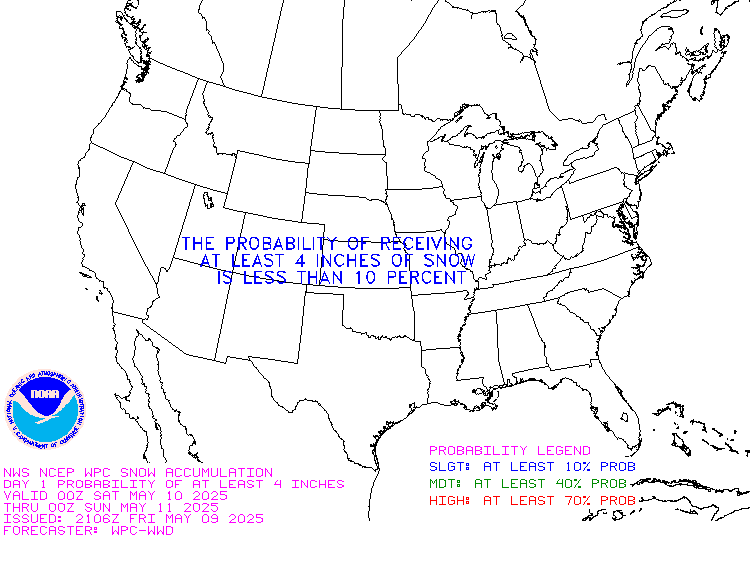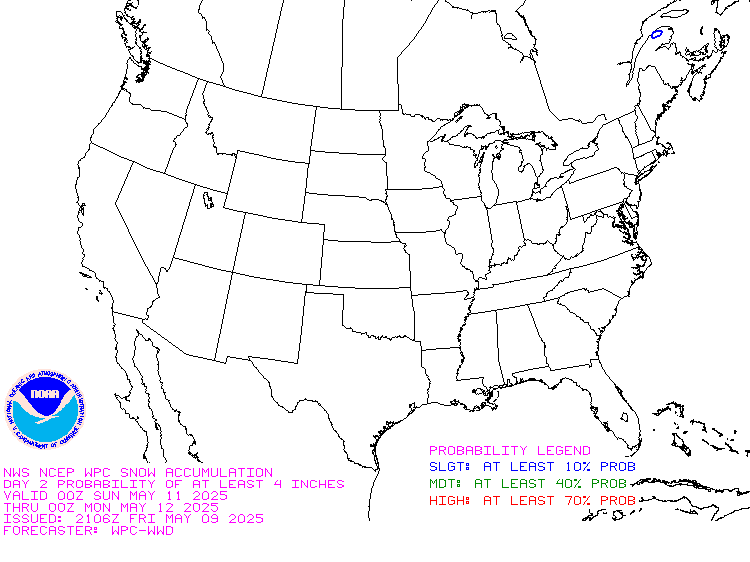This article focuses on what we are paying attention to in the next 48 to 72 hours. The article also includes weather maps for longer-term U.S. outlooks and a six-day World weather outlook which can be very useful for travelers.
First the highlights from the NWS.
Short Range Forecast Discussion
NWS Weather Prediction Center College Park MD
Wed Jan 03 2024
Valid 12Z Wed Jan 03 2024 – 12Z Fri Jan 05 2024…Showers and thunderstorms spread eastward from the central Gulf Coast
Wednesday into Florida and portions of the Southeast Wednesday night……Lake-effect snow showers forecast downwind from the Great Lakes…
…Lower elevation/coastal rain and higher elevation accumulating snowfall
continues in California, the Great Basin, and the Southwest/Four Corners
Region Wednesday, with snow shifting into the Central/Southern High Plains
Thursday……Precipitation chances remain in the forecast for the Pacific Northwest
as a couple system pass through…
Please click on “Read More” below to access the full report issued today.
| Notices: The article on the Updated Outlook for January 2924 can be accessed HERE. What would you like to learn about? Please provide that to me via the comment section at the end of the article. |
Now more detail on the 48-Hour Forecast (It is a 48 to 72 Hour Forecast actually)
Daily weather maps. The Day 1 map updates twice a day and the Day 2 and 3 maps update only once a day. These maps update automatically. But if that does not happen, you can get updates by clicking HERE
TODAY (or late in the day the evening/overnight map will appear) (Key to surface fronts shown on maps and you will then also be able to insert a city name or zip code and get a local NWS forecast).
TOMORROW
NEXT DAY
This animation shows how things may play out over the next 60 hours. To update click here.
The NWS Climate Prediction Center’s: Watches, Warnings, and Advisories plus other information can be found HERE. We post at least one of those updates daily, sometimes both. The Highlights are shown in the lede paragraph of this article.
ATMOSPHERIC RIVERS
This tells us what is approaching the West Coast. Click HERE to update If I have not gotten around to doing the update. Here is some useful information about Atmospheric Rivers.
Continuation of the NWS Short Range Forecast. It is updated by NWS twice a day and these updates can be found here
An active weather pattern looks to continue for the foreseeable future as
a series of systems follow an energetic jet stream eastward from the West
Coast through the South. Gulf moisture overrunning a frontal boundary with
a system currently moving along the central Gulf Coast will continue to
encourage showers and thunderstorms with moderate to locally heavy
rainfall Wednesday. Storm chances will shift eastward with the system into
Florida and northeastward along the Atlantic coast through Georgia and the
Carolinas by Wednesday evening and into early Thursday morning. To the
north, a frontal wave dropping through the Great Lakes with accompanying
northern and westerly cyclonic flow will encourage lake-effect snow
showers. Favorable locations south and east of Lakes Superior and Michigan
and east of Lakes Erie and Ontario will generally see around 1-4″ of
accumulation, with some locally higher amounts possible, particularly
downwind of Lake Ontario with some more intense snow bands. The snow will
taper off by early Thursday.Lower elevation/coastal rain, a wintry mix for interior valleys, and
higher elevation snow will continue across California, the Great Basin,
and the Southwest/Four Corners region Wednesday as a storm system passes
through the region. The focus for moderate to locally heavy snowfall will
shift from portions of California earlier Wednesday into the Great Basin
and Southwest/Four Corners region Wednesday afternoon and evening.
Additional accumulations of at least a few inches are expected for the
northern coastal ranges, Klamath mountains, and Sierra in northern/central
California, as well as for higher elevations in the mountains of southern
California, generally around the greater Los Angeles area. Some heavier
totals of 5-10″+ will be possible across portions of the central Great
Basin in Nevada, with 4-6″ into the Four Corners region. Any accumulations
for interior lower elevation/valley locations should remain very light.
High surf will once again be a concern along coastal California. The
system will continue eastward Thursday, tapping into Gulf moisture as
southerly flow increases ahead of the system over the Southern Plains.
Snow is expected for portions of the Central/Southern High Plains, with a
growing concern for at least a few inches of accumulating snowfall in
northeastern New Mexico, southeastern Colorado, and western portions of
the Oklahoma and Texas Panhandles. Shower and thunderstorm chances will
pick up late Thursday/early Friday for portions of eastern Texas into
southern Oklahoma, with a wintry mix in the transition zone across
northern Oklahoma into southern Kansas.Precipitation chances will also continue in the Pacific Northwest as the
initial system departs Wednesday and a second Pacific system approaches by
early Thursday. Moderate rain showers are likely for lower
elevation/coastal locations with accumulating snowfall for higher
elevations of the Cascades. Some precipitation will also spread into
interior locations of the Pacific Northwest and the Northern Rockies, with
a wintry mix for lower elevations and a few inches of snow possible for
higher elevations in the area mountains.High temperatures will generally be near to above average along the
northern tier of the country. Highs from the Northern Plains eastward
through the Upper Midwest and into the Great Lakes will be in the 20s and
30s, with 30s and 40s in New England. Highs in the 30s and 40s will also
be common from the Central Plains eastward through the Midwest, Ohio
Valley, and into the Mid-Atlantic. Areas to the south will be running
below average as the active storm track with frontal passages and
precipitation chances keeps temperatures down. Many chilly highs in the
40s are expected for the Southeast Wednesday before conditions moderate a
bit Thursday, with highs into the 50s. The Southern Plains will mostly be
in the 50s while the Desert Southwest and southern California will be in
the 50s and 60s.
Learn about wave patterns HERE.
Below is the current five-day cumulative forecast of precipitation (Updates can be found HERE)
Ski SnowReports
New Feature – Ski Reports. It is difficult to find reports that auto-update on-screen (and they are very long) but these links will get you to them – If you have additional suggestions make them in the comments section after every Econcurrents Article and we may add those links. We will try to not have too much overlap as that can add to the confusion.
Snow Forecasts. And remember this shows natural snow. Ski resorts also make their own snow.
Day 1

Day 2

Additional snow information can be found here and here. The second link provides animations.
Now we look at Intermediate-Term “Outlook” maps for three time periods. Days 6 – 10, Days 8 – 14, and Weeks 3 and 4. An outlook differs from a forecast based on how NOAA uses these terms in that an “outlook” presents information as deviation from normal and the likelihood of these deviations.
Below are the links to obtain updates and additional information. They are particularly useful if you happen to be reading this article significantly later than when it was published. I always try to provide readers with the source of the information in my articles.
| Days 6 – 10 (shown in Row 1) | Days 8 – 14 (Shown in Row 2) | Weeks 3 and 4 (Shown in Row 3 but updates only on Fridays) |
| https://www.cpc.ncep.noaa. gov/products/predictions/610day/ | https://www.cpc.ncep .noaa.gov/products/predictions/814day/ | https://www.cpc.ncep.noaa.gov/products/predictions/WK34/ |
Showing the actual maps. They should now update automatically. The Week 3 – 4 Outlook only updates on Fridays. So below is what I call the Intermediate-term outlook. On Fridays, it extends out 28 Days. That declines day by day so on Thursday it only looks out 22 days until the next day when the Week 3 – 4 Outlook is updated and this extends the outlook by one additional week.
| 6–
10
|
|
|
| 8–
14 |
|
|
| 3–
4 |
|
|
HAZARDS OUTLOOKS
Click here for the latest complete Day 3 -7 Hazards forecast which updates only on weekdays. Once a week probably Monday or Tuesday I will update the images. I provided the link for readers to get daily updates on weekdays. Use your own judgment to decide if you need to update these images. I update almost all the images Friday Night for the weekend edition of this Weather Report. So normally readers do not need to update these images but if the weather is changing quickly you may want to.
Temperature month to date can be found at https://hprcc.unl.edu/products/maps/acis/MonthTDeptUS.png
Precipitation month to date can be found at https://hprcc.unl.edu/products/maps/acis /MonthPNormUS.png
World Forecast
Below are the Day 1 -3 and 4-6 forecasts for temperature and precipitation. Updates and much additional information can be obtained HERE
World Temperature Anomalies
World Accumulated Precipitation
This information is provided by the University of Maine. They draw upon many different sources. There is a lot of information available at the link provided. I have just provided two useful forecasts. There are probably over a hundred different forecasts available from this source.
Worldwide Tropical Forecast (This is a NOAA Product)
This graphic updates on Tuesdays) If it has not been updated, you can get the update by clicking here Readers will only have to do that if they are reading this article much later than the date of it being published.
Information on Tropical Storms can be found HERE. Western Pacific information can be found HERE.
–
| I hope you found this article interesting and useful. |
–

